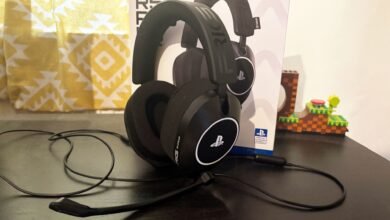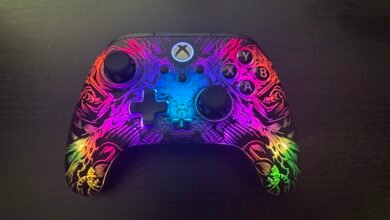Two Elite Controllers Tested: The One Feature That Makes the Difference

▼ Summary
– The third-party controller market continues to grow with innovative models offering more features and improved performance.
– Both the Huben 2 and G7 Pro are high-end controllers competing at the same price point with multi-platform compatibility but differing console support.
– The Huben 2 includes a premium hard-shell case and has four back buttons, while the G7 Pro comes with a charging dock and features two back buttons plus two extra front buttons.
– In performance, the Huben 2 excels with its clicky face buttons, excellent D-pad, and comfortable triggers, while the G7 Pro has a more clicky D-pad but lacks dampening and grip.
– The Huben 2 is the preferred choice for PC, Android, and Switch users due to its premium feel and superior design, though both controllers offer extensive customization through software.
The world of third-party gaming controllers continues to expand, with brands like Mobapad and GameSir pushing the boundaries of performance and customization. Both companies have recently launched high-end models, the Huben 2 and G7 Pro, aimed squarely at discerning gamers who demand more than what standard controllers offer. While both sit at similar price points and deliver impressive functionality, one distinguishing feature ultimately sets them apart.
Upon unboxing, the Huben 2 immediately stands out with its premium hard-shell case, which not only protects the controller but also stores accessories like an extra D-pad and USB dongle. The controller itself boasts a sleek transparent design, revealing a crisp white interior complemented by vibrant red accents. Build quality is exceptional, with smooth-moving components and a textured grip on the handles, though some may find the hard plastic less comfortable during extended sessions.
In comparison, the G7 Pro features a slightly more compact form factor, potentially better suited for those with smaller hands. It lacks a carrying case but includes a well-designed charging dock that complements its overall aesthetic. The controller uses a soft-touch material on the grips, providing a more secure hold than the Huben 2. Both models follow the familiar Xbox layout, but their button configurations differ: the G7 Pro includes a headphone jack and two extra front buttons near the triggers, while the Huben 2 offers four programmable back buttons.
A significant advantage of the G7 Pro is its convenient hardware-based button disable switch, which allows users to quickly turn off rear inputs without diving into software. The Huben 2 requires its companion app for the same functionality. Both controllers support extensive customization via mobile and desktop applications, with each offering robust options for remapping, adjusting stick sensitivity, and fine-tuning turbo or motion settings. The Huben 2’s mobile app is particularly detailed, though it’s worth noting that the controller itself can’t navigate the app, a minor inconvenience.
Compatibility also plays a role in choosing between the two. The Huben 2 supports PC, Android, iOS, and Nintendo Switch, while the G7 Pro is tailored for Xbox Series X|S, Xbox One, PC, and Android. This platform alignment may heavily influence a buyer’s decision depending on their gaming ecosystem.
In terms of performance, the Huben 2 excels with its highly tactile face buttons and exceptional D-pad, which deliver precise, clicky feedback ideal for fighting games or menu navigation. The triggers are well-shaped and comfortable, reducing finger fatigue during long play sessions. The G7 Pro’s triggers offer more resistance and damping, which some may prefer, though its D-pad is less ergonomic and can be slippery during rapid inputs.
Both controllers incorporate advanced stick technology, Hall Effect sensors in the Huben 2 and TMR sensors in the G7 Pro, resulting in accurate and responsive analog control. The Huben 2’s sticks feature deeper concavities and a softer rubber finish, providing better grip and a more satisfying tactile experience.
Motion controls perform admirably on both devices, though the Huben 2 truly shines when used with the Nintendo Switch, offering seamless integration in titles like The Legend of Zelda: Breath of the Wild. The G7 Pro’s gyro functions are limited to PC use, where fewer games natively support the feature.
Connectivity is reliable across both controllers, with easy switching between devices via rear sliders. Each model supports both Bluetooth and dedicated wireless dongles, ensuring stable performance during gameplay.
Ultimately, both the Huben 2 and G7 Pro represent the upper echelon of third-party controller design. Your choice may come down to ecosystem preference or specific ergonomic needs. However, for its superior D-pad, broader compatibility, and more refined overall feel, the Huben 2 holds a slight edge for gamers who value precision and versatility.





